Camping often has notable barriers for entry if you want to sleep in something more substantial than a tent. If you want a travel trailer, you need a car that’s capable enough to tow it. You also need to worry about where to store the camper and oh yeah, spend a ton of money on buying the camper itself. In the 1960s, Britain’s Sprite had a brilliant solution for people who wanted to camp on a budget using their new BMC Minis. The Sprite 400 weighed just under 881 pounds, had a price under £250, and could be towed by practically any car. This little camper became such a sensation that it has earned icon status in Europe and others have made it to America.
Last week, the Illinois Railway Museum celebrated its 34th annual Vintage Transport Extravaganza. The VTE, as IRM calls it, is one of the largest classic car shows in the state of Illinois. Some 500 classic cars show up at each VTE and the variety of the vehicles is intense. You will see everything from some of the earliest gas-powered cars to vintage Mack trucks, Chevrolet Corvettes, air-cooled Volkswagens, and even a beautiful Blue Bird Wanderlodge motorhome. Studebaker gets some great reputation at VTE, as does Nash, Hudson, and other brand that have been long deceased. There’s even a little import section, where you’ll find me displaying my latest loot from Japan.
The Vintage Transport Extravaganza is also unique because it happens right in the middle of an active train museum, so you can get your vintage train and bus kick while looking at classic cars at the same time. This is also a unique opportunity to get photos of vintage cars next to active antique railway equipment.
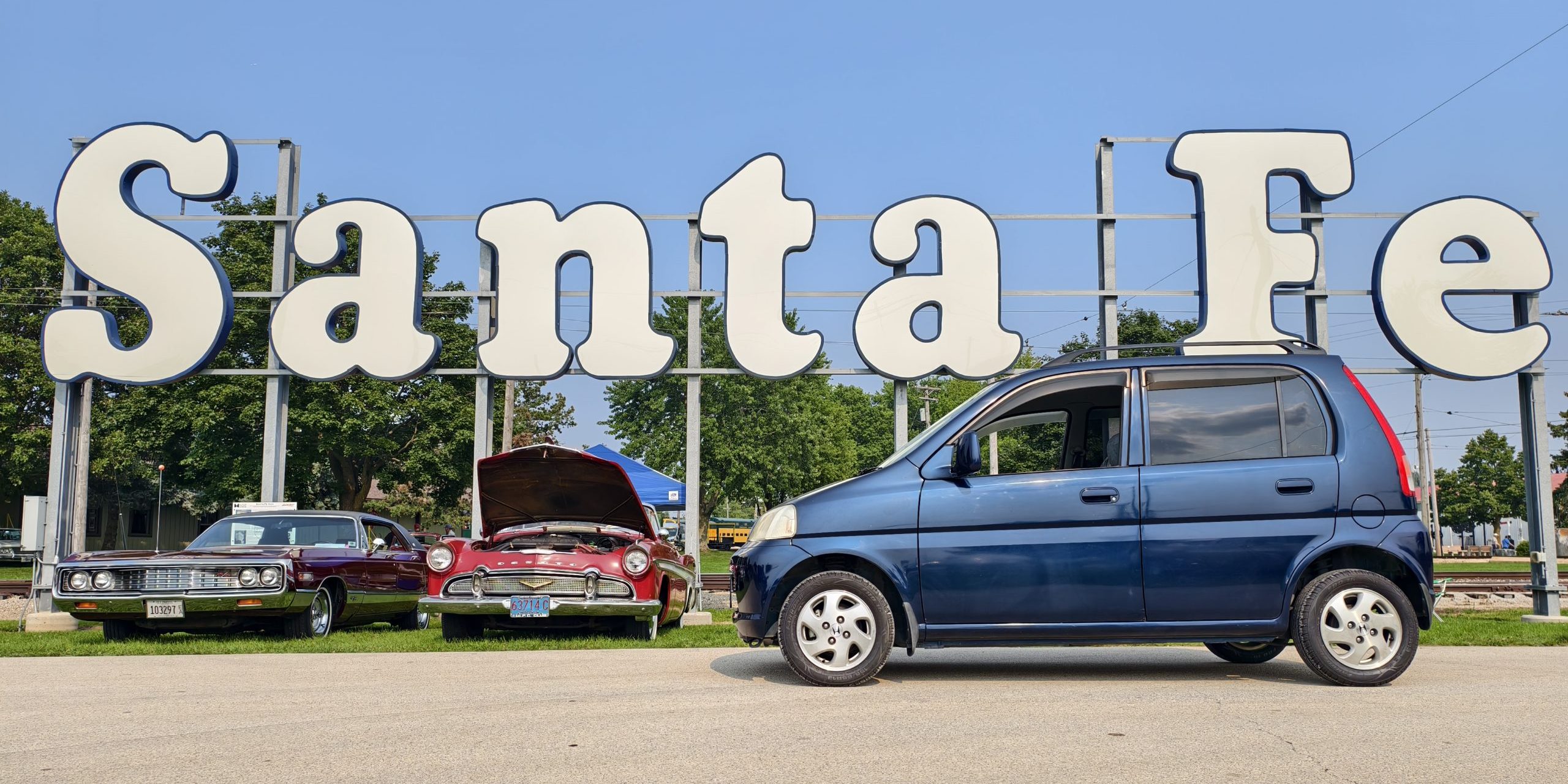
I’m always stoked to see what cars show up each year, but this time, one setup really caught my eye. Sitting in the Ford section was a beautiful Ford XL GT. That would be cool enough, but hitched to it was this, a 1968 Sprite 400. The camper caught my eye in part because it was hitched up to a car and not a truck or SUV, but also because I hadn’t seen anything like it before.
As it turns out, I’m late to the Sprite party because many of our older readers from the United Kingdom or Europe have almost certainly seen one of these before. But what’s amazing is, as the owner told me, the Sprite 400 once became such a big deal that Sprite took a crack at selling them in America.
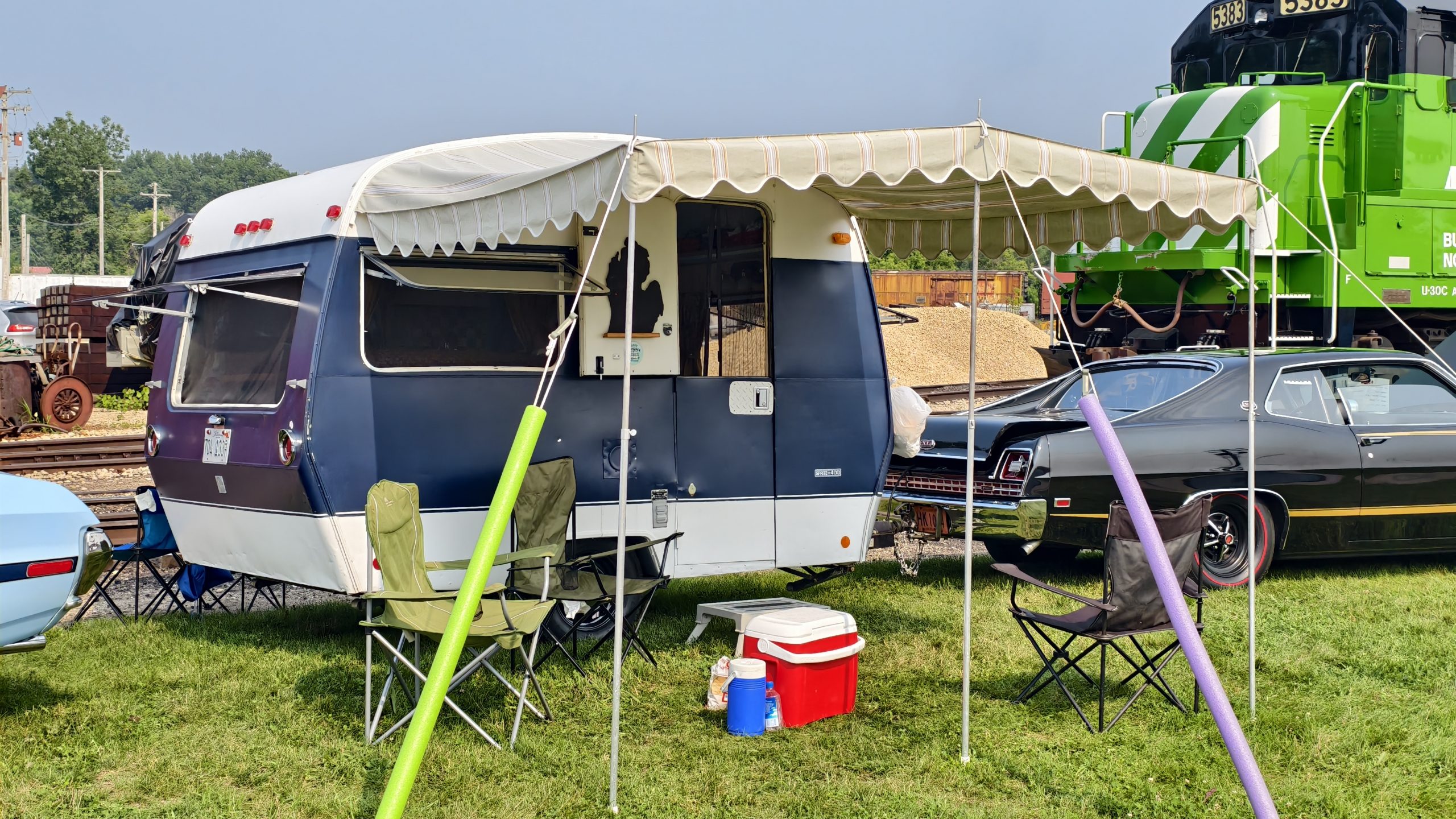
Camping For All
According to Cameron Burns, an expert in Sprite caravans (that’s what travel trailers are called across the pond), the Sprite 400’s story started in 1959 after the launch of the British Motor Corporation’s Mini. The Mini was a triumph of packaging, size, and affordability. Now, a British family could afford to scoot around in their thrifty Mini no matter what the economy was up to or what gas shortages hit.
The smashing success of the Mini caught the eye of RV designer Sam Alper. After World War II, Alper initially became an electrical engineer. But when this didn’t work out, he joined his brother, Henry Samuel, at the latter’s newly established camper manufacturer, Alperson Products. In 1947, the Newmarket Local History Society wrote, Alper designed his first camper. Materials were in short supply in the years immediately after WWII, so Alper used whatever he was able to get his hands on. Alper’s first camper had magnesium wheels plus the suspension and brakes from the landing gear of surplus Supermarine Spitfires. Reportedly, the roof was made out of the same material used to make barrage balloons back then. The Independent writes that Alper even had to get crafty with his camper’s frame, making it out of bog oak.
Next, as the Newmarket Local History Society writes, Alper began experimenting with Holoplast, which was a laminated plastic building material. A camper could be built out of Holoplast and surplus aluminum, and thus not need to use hardboard. The only problem was that these campers were just too heavy and pricy. As The Independent writes, Alper figured that the average cost of a camper was £500, which was just too much. So, Alper went back to the drawing board.
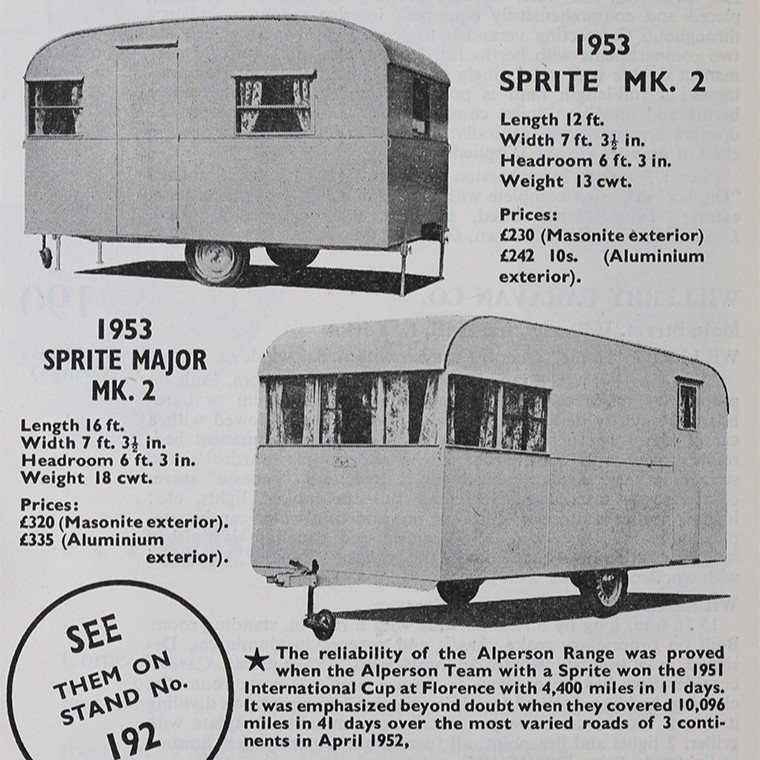
The Independent described what happened next:
He aimed to produce a lighter, cheaper caravan and set his target price at £200, with the ability to be towed by a normal saloon car. Just one year later, in 1948, he had achieved his goal. Built from tempered hardboard, the first Sprite caravan sold for just £199. Alper sold 500 in the first year of production. The name Sprite was to become synonymous with beginners’ caravans for nearly 50 years. One of Alper’s relatives had found the name by trawling through the dictionary, and had suggested the caravan be called the Sprite Fairylight. Alper decided Sprite was enough, and it certainly proved a winner.
Not only could Alper design and build a popular caravan, but he knew the value of publicity. In 1951 he towed a Sprite caravan to an international rally in Florence via Frankfurt, Biarritz and Naples. The four-and-a-half-thousand-mile trip won him an award from a French magazine but, more important, it won his caravans a reputation amongst British buyers.
Nineteen fifty-two saw an even bigger publicity stunt, a 10,000-mile, 33-day trip all around the Mediterranean. The tow car was a 3.5 litre SS Jaguar and the trip was far from trouble-free. Alper recalled sinking up to the axles in Saharan sand and being rescued by tribesmen. Roads in Yugoslavia and Greece were impassable, so the whole unit had to be loaded on a train; and the political situation in Israel necessitated a steamer trip from Egypt to Syria. The trip made Alper a media star, and established the reputation of Sprite caravans. Further long-distance tests were to be more arduous, but less exotic. In 1956, a 30,000-mile test was carried out at the Motor Industry Research Association (MIRA) proving grounds near Nuneaton. The result – one broken gas mantle. Sprite’s reputation was secure.

After the launch of the Mini, Alper decided that he needed to make an even lighter camper that the wee car could easily tow and that a cash-strapped family could afford. To achieve this, he took his existing Sprite Ariel 10-foot camper and managed to find around 110 pounds to shave from its weight. The Sprite 400 launched in mid-1960, and that “400” was a nod to the weight of the early trailers, which were a touch under 400 kilograms, or just 881 pounds. The price? Just £215, or the equivalent of £4,317 today. That’s $5,791 for our American readers.
This was an astonishing breakthrough. The Sprite was built with a triangulated frame riding on a leading-arm suspension. The body wasn’t anything special, as the camper was built out of wood and given an aluminum skin. The aggressive cost-cutting and weight-saving measures were found inside. A Sprite 400 had a plastic sink, plastic windows, hardboard furniture, an icebox, and a stove. The camper also technically had four beds, though one bed was really a hammock for a kid.
For many, a Sprite 400 was a more or less an affordable upgrade from a tent. These trailers did not have any real luxuries, but gave you hard walls, expansive windows, and basic camping apparatus. The other great thing is that, as I already noted, you could haul it even if all you had was a Mini or a Volkswagen Beetle.
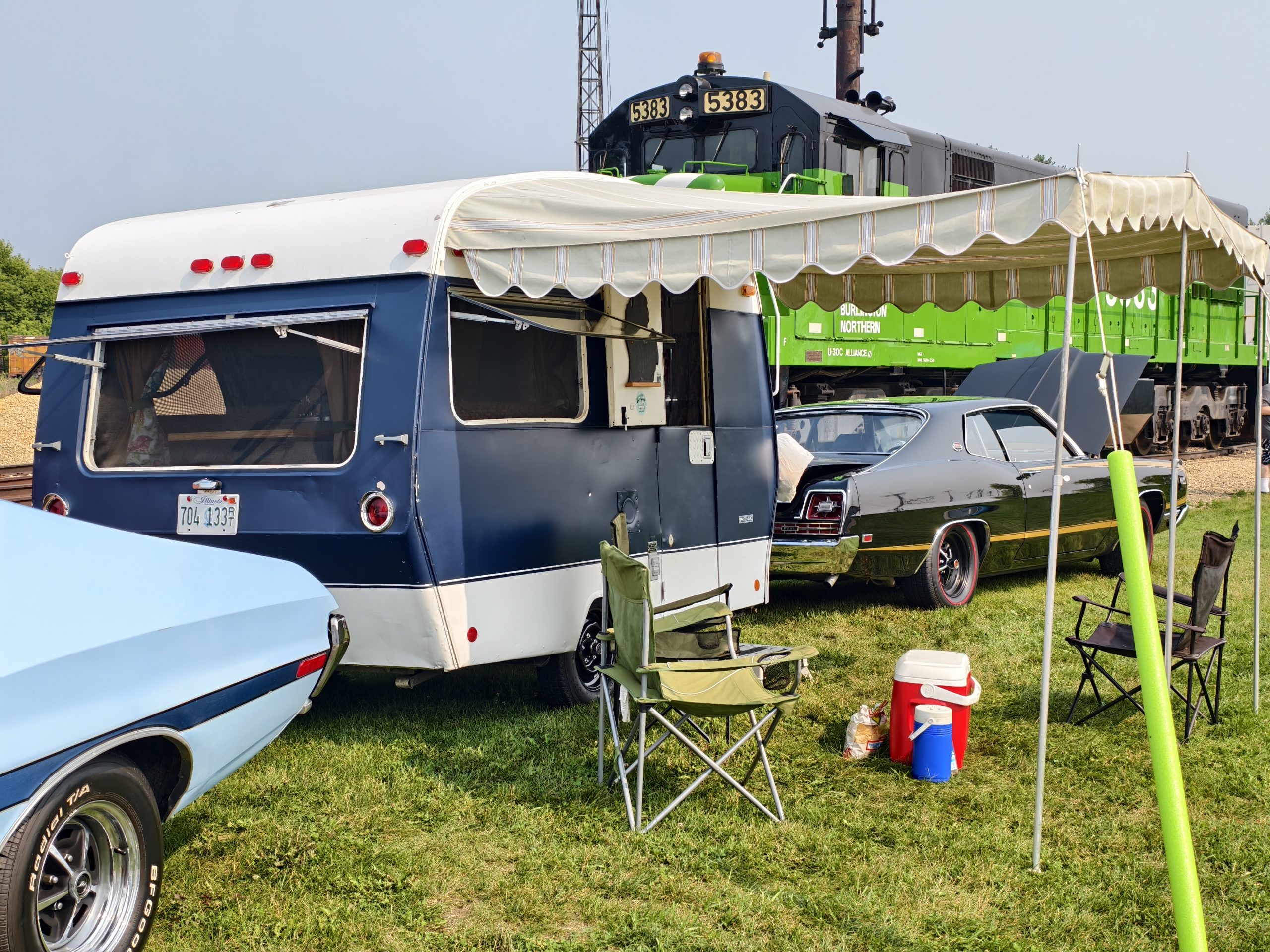
As Hagerty UK writes, caravanning was in a dark place when the Sprite 400 launched. Many British families went on vacation by taking advantage of package holidays, which took them to some sunny beach far away. Few people wanted to sleep in a camper in cloudy and dreary Britain. But the Sprite 400 helped revitalize the British camper industry. Suddenly, everyone wanted one of these little Sprites to take on a fun trip.
Alper also helped this by never really giving up on the wild publicity stunts. In 1964, Hagerty UK writes, Alper hitched a Sprite up to the back of a Jensen C-V8, then proceeded to reach 101 mph with the camper on the back.

As the 1960s marched on, cars got bigger and more powerful, and the Sprite 400 evolved to match. The plastic windows became glass windows, and in 1966, the Sprite’s body got a little taller (above). The camper would later embrace the styles of the 1970s with bright colors and wood-effect Formica plastered all over the interior. These later Sprites are heavier, and are believed to weigh closer to 500 kilograms, or about 1,102 pounds or so.
Of course, by now, Sprite had made its name in building super tiny campers, and in the 1970s, the company also produced the eight-and-a-half-foot-long Sprite Cadet, which brought Sprite back to its roots. It was even a dirt-cheap £227 when new. The Independent tells more about the Alper and Sprite story:
By 1963 Sam Alper was at the head of Caravans International, which brought together his own Sprite brand, the long established Eccles brand and also Bluebird Caravans. Caravans International dominated the home market, making more than half of Britain’s caravans, as well as producing caravans in seven European countries, South Africa, Rhodesia, the United States and Canada. In 1966 CI caravans won the Queen’s Award for Industry and in the same year Sam Alper was appointed OBE for services to exports. He never lost his amazing gift for publicity. One famous Alper product was a caravan-shaped hovercraft which obtained enormous publicity when displayed at the Caravan Show.
The caravan industry had its ups and downs and this, together with its seasonal nature, made Alper look for alternative products. He developed the first successful table football game, Soccerette, built yachts, and was also responsible for the first Little Chef restaurants in Britain. He based the design on the roadside diners of the United States.
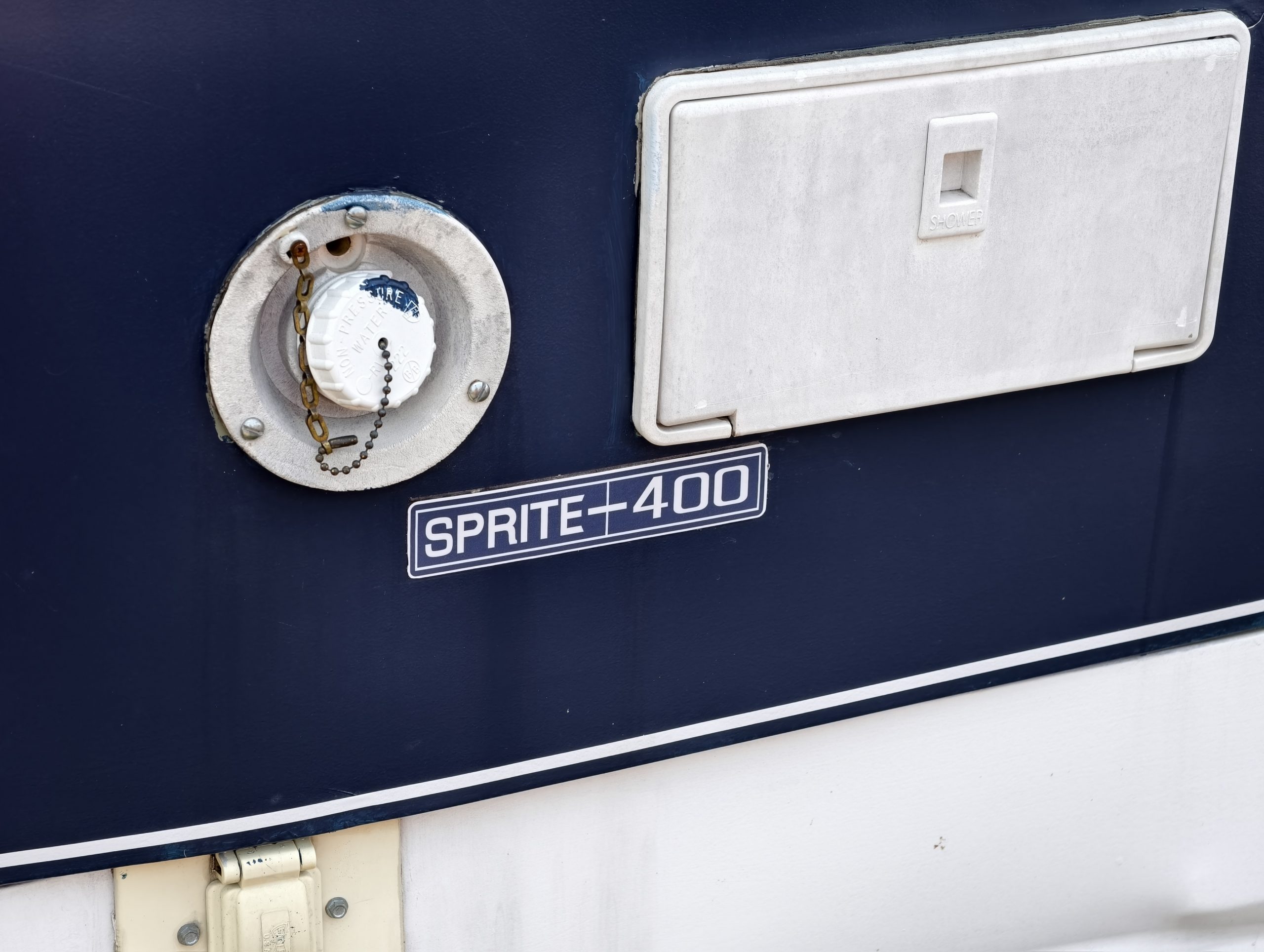
Alper served as Treasurer and then Chairman of the National Caravan Council, the industry body, for many years. He was also among those who set up the European Caravan Federation and was its president for a decade. The recession of the Eighties took a heavy toll on the British caravan industry and in 1982 Caravans International went into liquidation. Alper retired to Chilford Hall, a vineyard near Cambridge where he devoted his time to making English wine. He set up the East Anglian Wine Growers’ Association and served as a Board Member of the English Vineyard Association.
You read that right. The Sprite camper was such a sensation that Caravans International built some in North America. Apparently, at least some of these campers were shipped as kits sold by Sprite North America Inc. and then assembled stateside.
An American Sprite
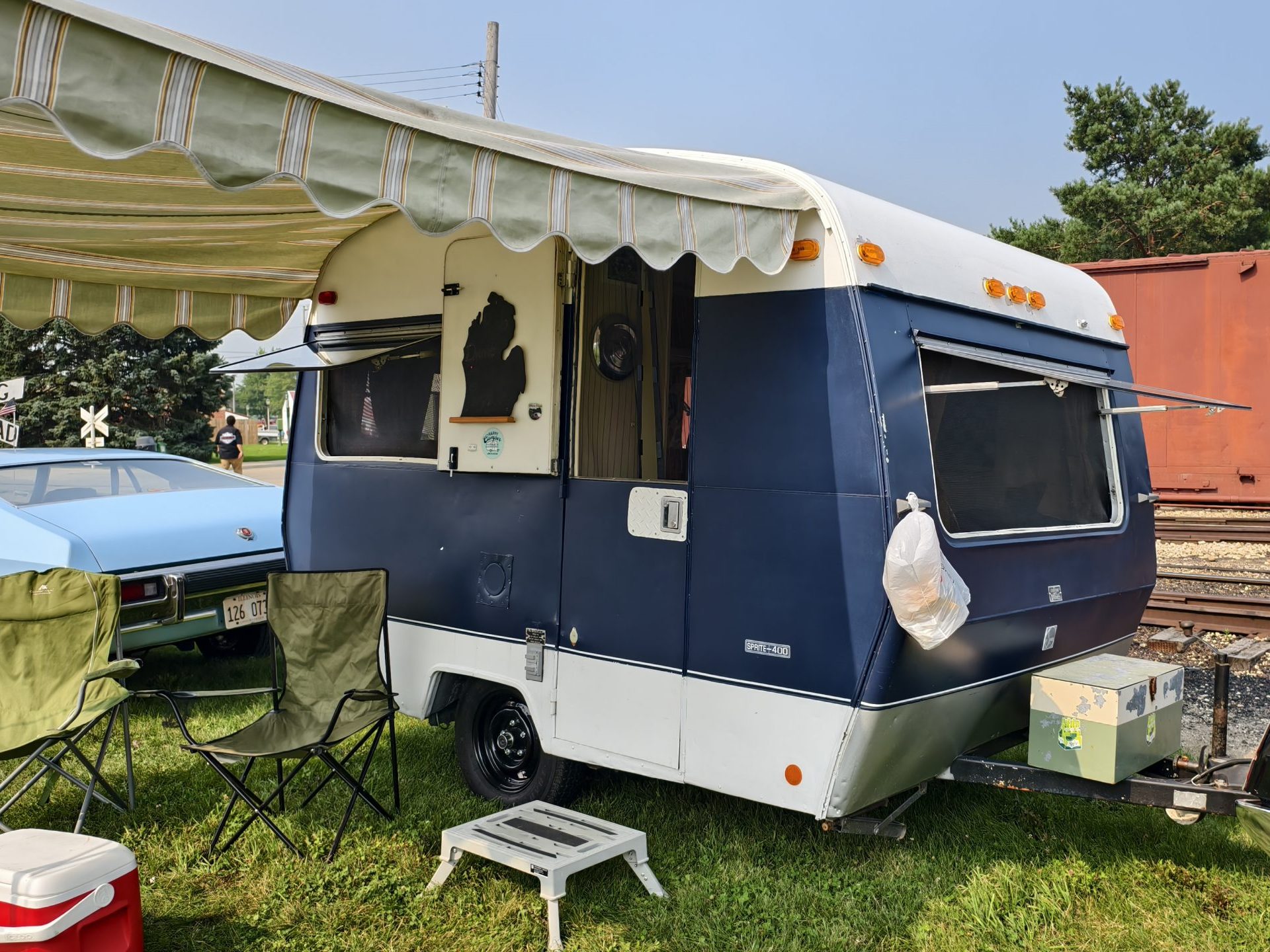
That brings us back to the Sprite 400 that I saw at the Illinois Railway Museum. The owner told me that he had been on the search for the perfect classic camper. He struck out on some other campers before finding this 1968 Sprint 400 in Michigan. He believes this one to be one of the units that was built here in America. The owner also joked that the best campers come from Michigan, and, honestly, I totally agree. Michigan is where I found my 1985 U-Haul CT13!
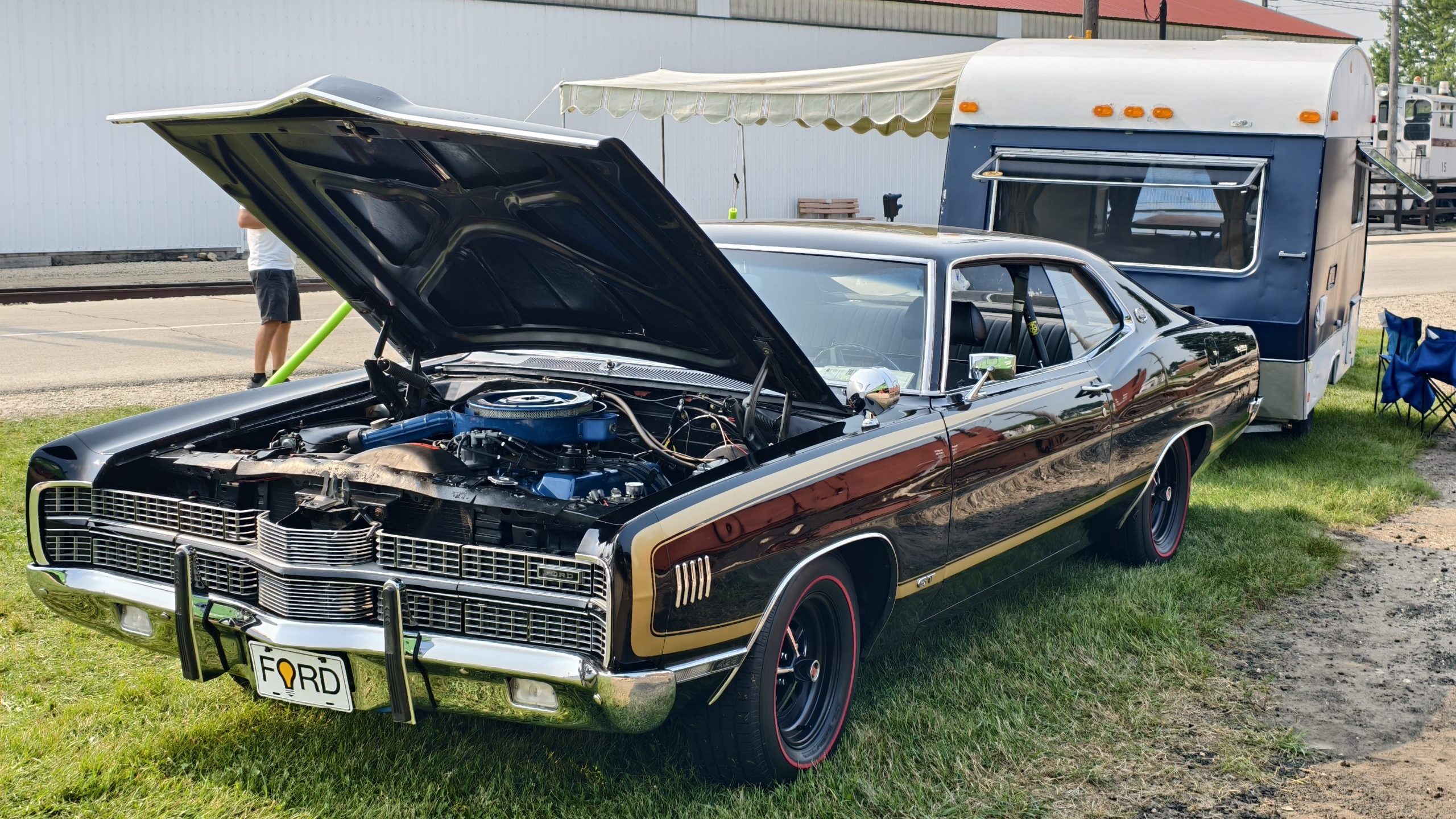
What I love about this rig is that it is mostly period-correct. The Ford XL GT SportsRoof that was towing the trailer came from 1969. If you were an American who loved fast cars and had gotten in on the RV boom of the 1960s, you could have owned an XL GT and hauled a Sprite 400 with it. In case you’re curious, the XL GT was pitched as a hotter, more upscale version of the Galaxie 500. The hottest version in 1969 sported a 4V Thunder Jet 429 cubic inch V8, which was good for 360 HP and 480 lb-ft of torque.
The camper had been modernized somewhat, with the icebox replaced by a refrigerator, new electrical outlets, a stainless steel sink installed, and a few more modern touches.
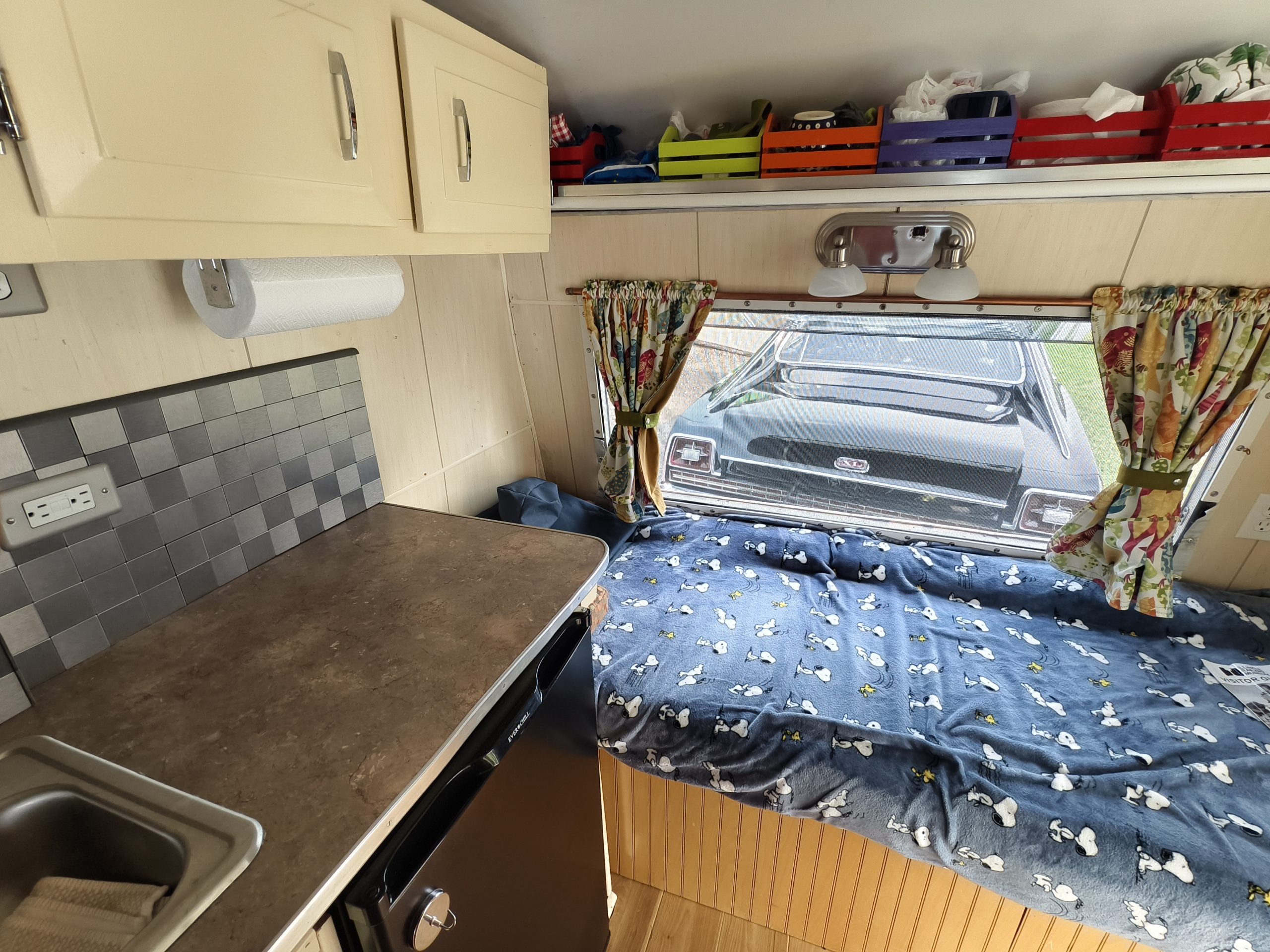
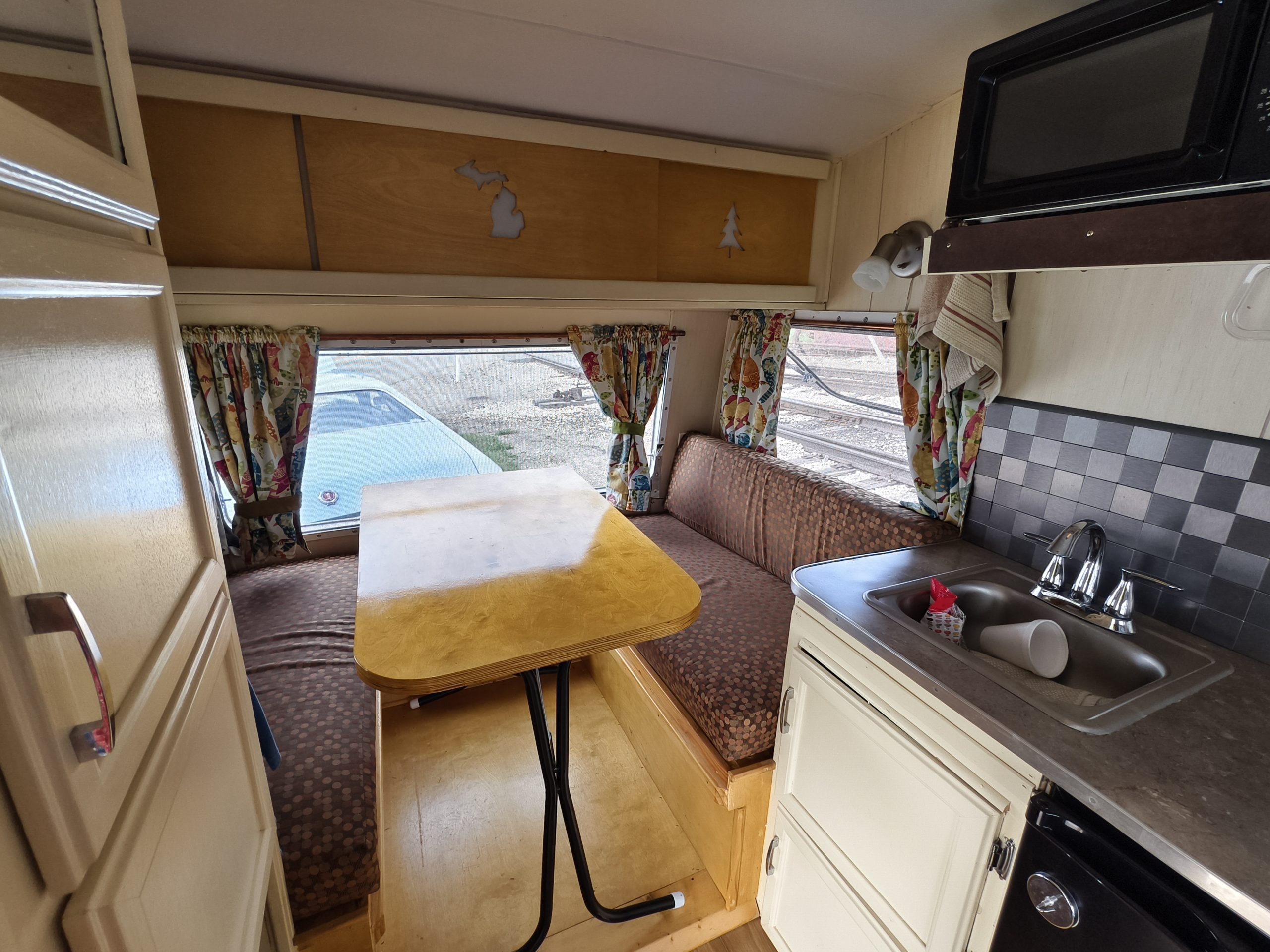
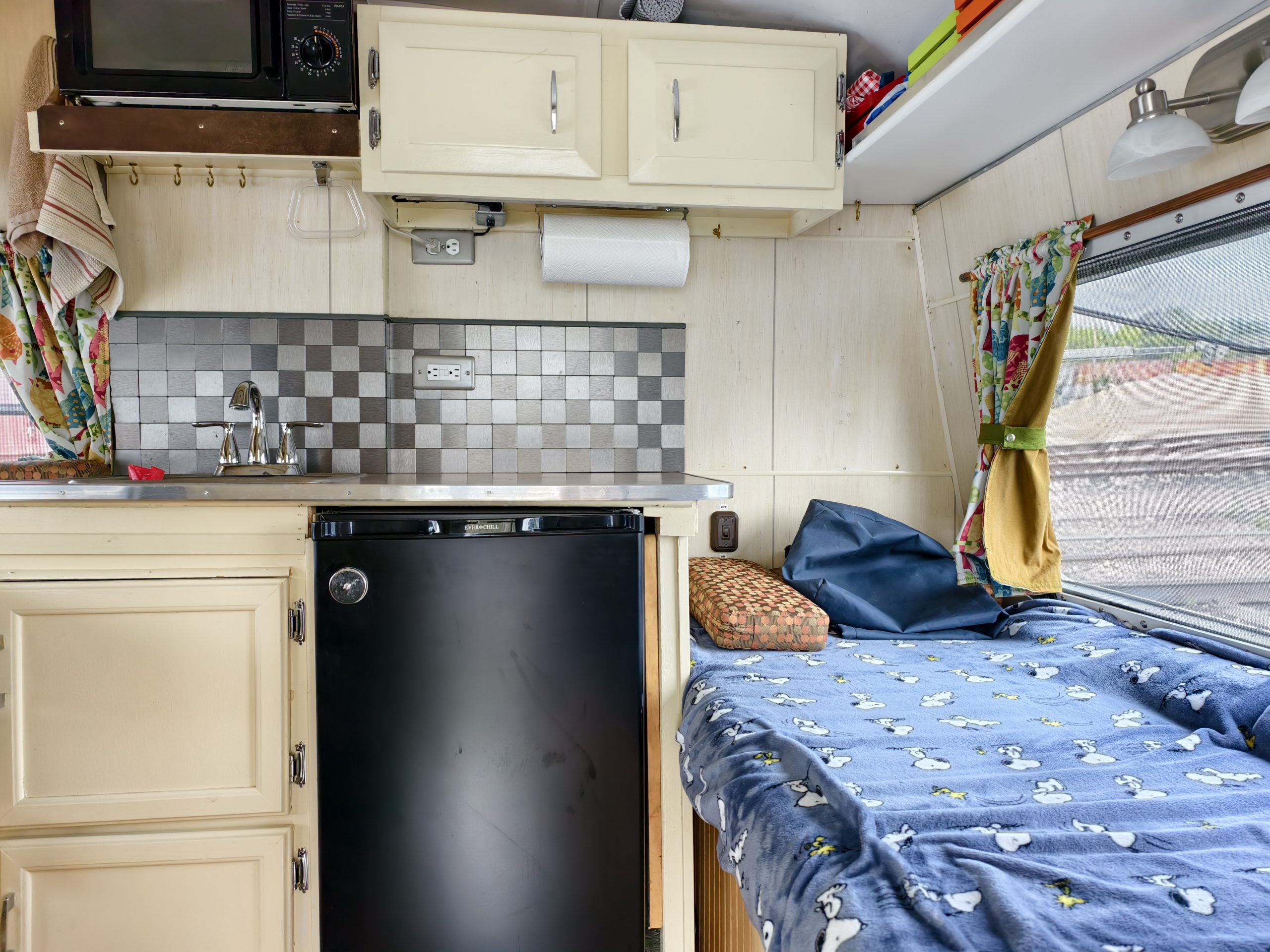

The result is that this camper might be a 1968, but it’s more than comfortable for use in the modern day. Sure, it doesn’t have a bathroom or an air-conditioner, but it does have huge windows that swing out for ample ventilation on a hot day. Modern American campers can only wish to have windows this huge. The owner tells me that this camper does see actual use, too! It’s not just something to take to shows.
What’s also neat is that, while Sprite was insanely popular in the UK, it didn’t take off quite as hard here in America. If you pull one of these bad boys into a classic camper show, you probably won’t find many others like it.
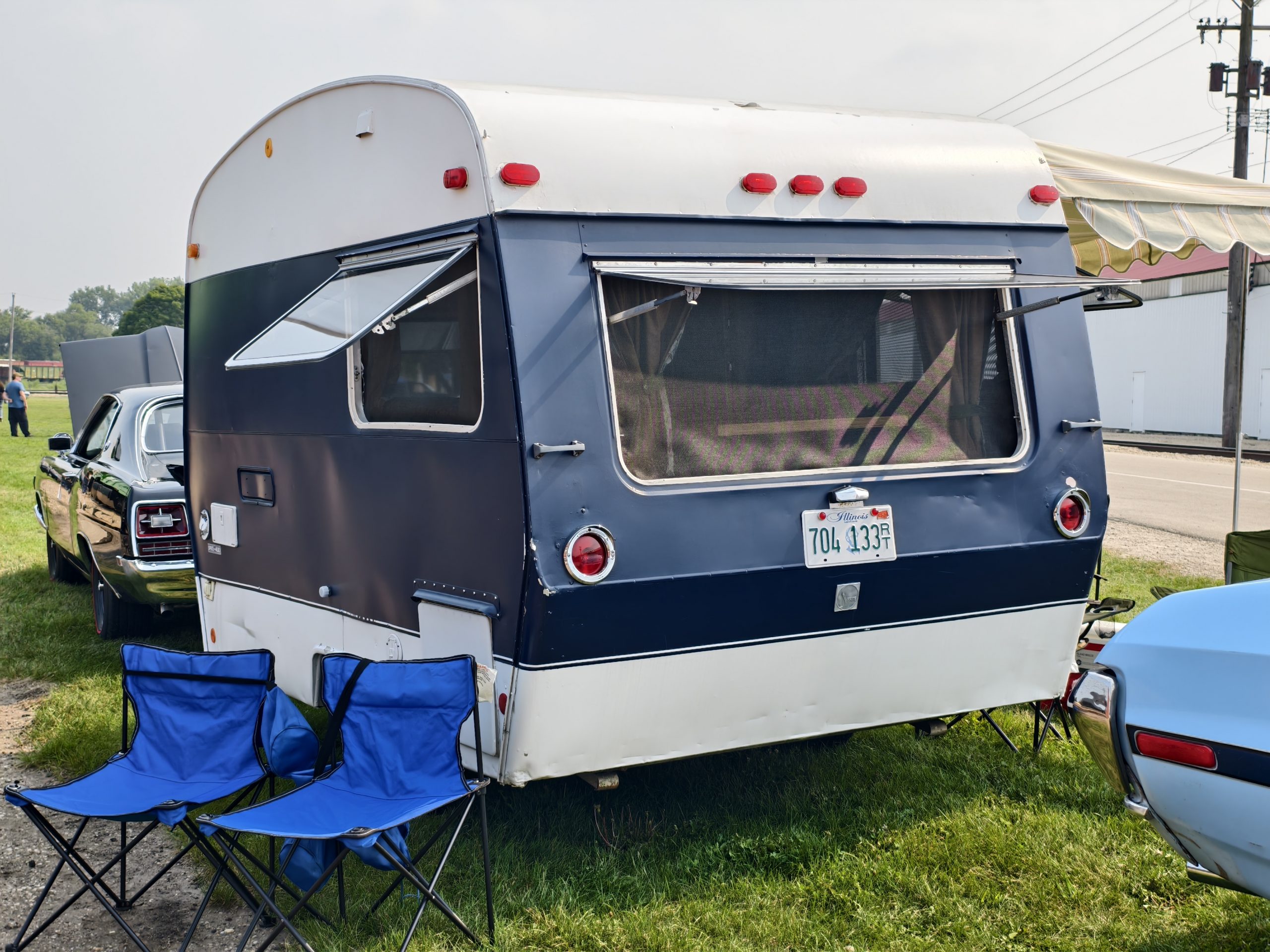
The other neat thing is that Sprites are obscure enough that they aren’t being hoarded by collectors. You can buy a slightly newer and larger Sprite caravan right now for only $5,000 in Virginia. I have not found any Sprite 400s currently for sale in America, but I’m told that when you do find one, getting one for under $10,000 should be a walk in the park. In the worst case, these trailers are almost worthless in the UK, and you can always import one.
Should you find one, you’ll have one iconic weirdo. It’s a camper made to be towed by darn near any car, yet it has sleeping for a few people, a place to cook, and a place to get away from the weather. It’s a step up from a tent, and for many people, that’s perfect.

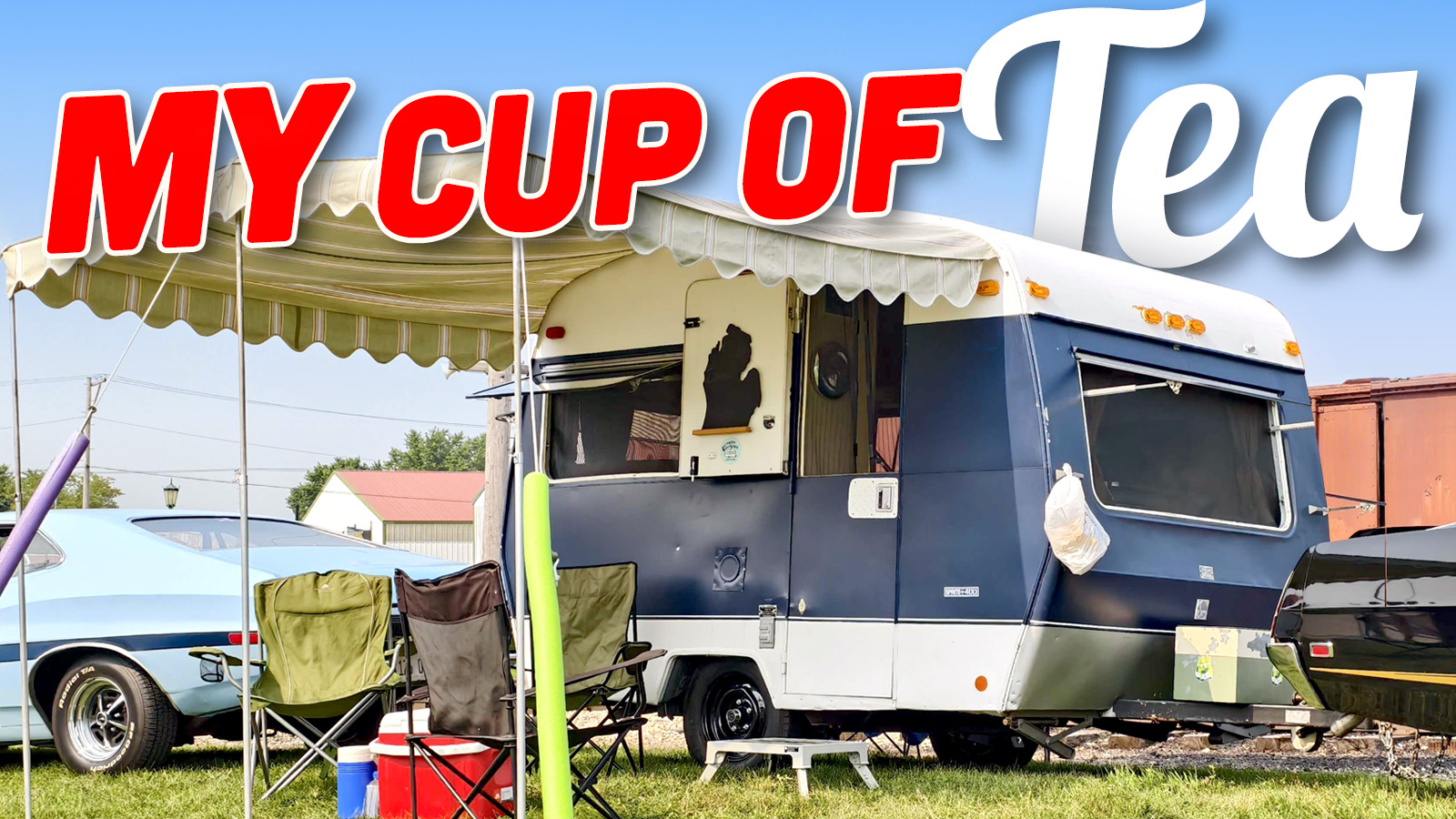







Another great article, Mercedes. Love the pics, too. As a kid in Michigan, I was jealous of the families who had trailers (or campers, as they were sometimes called).
And, of course, they were usually towed by passenger vehicles, wagons and sedans.
Keep up the good work!
(And, no, despite my surname and living in Indiana I am not related to the RV industry kingpins in the northern part of the state. I get that a lot).
Wow, these Sprites are really cool!
(Although I prefer 7-Up…I’ll see myself out…) That Ford XL is awesome too. Another great camper article!
I get that! I’m sure Sprite (the soda) has more market share due to years of promotion by Coke but, side-by-side 7-up wins on taste and “crispness.”
Plus, 7-up is made with “uncola nuts” right?
This is the size my wife and I would be looking into. Though she gets wooed by the cuteness of Scamps
My folks had a Sprite in the 1980’s, which we took over to France every summer. It would sleep all five of us…just. So most of the time us kids would sleep in tents and my folks had the caravan.
I don’t remember anyone ever worrying about towing ratings either. The British attitude seems to be ‘if it can move the caravan, it’s enough’.
Awesome!
I remember as a kid seeing these things destroyed, folded and abandoned along road climbs in Scottish Highlands. That would be about 1963 or 4. Unless they became more sturdy with age I would not touch one with a 10 foot pole. Based on this brief historical observation I tend to side with the UK valuation.
Yeah, Brits and trailers.
https://youtu.be/iM2dUe2cHjA
Thank you for this link. I just went down the Caravan racing rabbit hole for 20 minutes and it was hilarious
Great link!
I’ve been on the fence about getting a small camper or teardrop, and this helped me realize the fence I’m on is several feet wide.
Such a crazy, wild adventure with the longer wheel base cars seemingly doing better. The driver of what appears to be a blue Volvo, with the vantage point of looking through the ‘windscreen’ with netting on one side, had fun destroying a few cars/caravans at the end! No winners, or everyone is a winner!
Love Autopia’s subscribers who provide links and additional info!
Well, have you considered a schoolbus?
https://youtu.be/1ciN4m2z3sM
Unless you need to tow a boat, in which case case a. RV m be more appropriate
https://youtu.be/GWrNTJAypU0
Actually, there is some pretty skillful driving here. I wish drivers in Brooklyn were that good.
These Class C motorhomes with boats are more serious, as they slow down at the intersection of the figure “8” of the track to give leaders priority. And I didn’t see much RV-RV contact.
Guessing summer sun/heat is reason to run these and bus races at night? Or to protect the guilty?!
Great selection of videos – thanks again for the smiles on this side of the interwebs.
Cheers
PIT maneuvers in buses! Love the tire squealing around the track. 🙂
Will never own a bus converted into an RV. I understand repairs out on the road are challenging due to major differences in bus drivetrains vs. Class B and C.
Too much time watching this!
Thanks!
Well, then, you must check out this gem. Still hard to believe these guys got away with this. https://share.google/fccPnjC4zDtrVJ5vD
Classic! Getting into air space over an active airport is crazy…
Fun video!
Thanks for sharing.
Really for an inexpensive camper for an event that isn’t more than 1 or 2 times a year the poptop camper was the solution